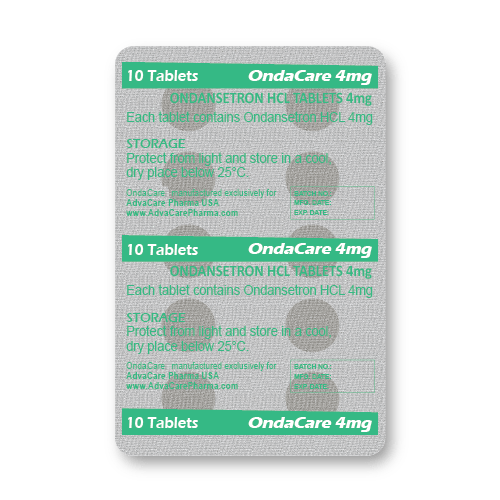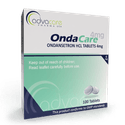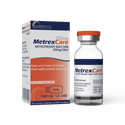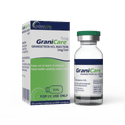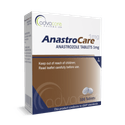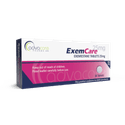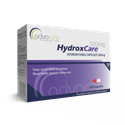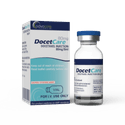- Home›
- Pharmaceuticals›
- Oncology Products›
- Oncology Tablets›
- Ondansetron Tablets
Ondansetron Tablets
Dosage
Packaging
What is Ondansetron HCl?
Active Ingredients: Ondansetron HCl
Ondansetron Tablets are an antiemetic drug used to prevent nausea and vomiting caused by surgery, radiation, or chemotherapy. Ondansetron can be used alone or in combination with other medications. This medicine is not typically used for preventing nausea or vomiting caused by factors other than cancer treatment or surgery.
The active ingredient, ondansetron, is a serotonin (5HT3) receptor antagonist. It is thought to work by blocking the signals in the brain that might trigger nausea and vomiting.
Ondansetron Tablets are produced with a dosage of 4mg or 8mg. These tablets are available packaged as a box of 100 tablets.
AdvaCare Pharma's Ondansetron Tablets are manufactured in GMP-certified facilities located in China, India, and the USA. We routinely inspect our production facilities to ensure our products meet health, safety, and environmental standards.
Why are we a trusted Ondansetron manufacturer?
AdvaCare Pharma manufactures Ondansetron Tablets, one of 40+ oncology treatments, according to rigorous GMP protocols at our state-of-the-art production facility. We are committed to producing quality-assured, cost-effective cancer treatments that meet the highest industry standards and are readily available to cancer patients worldwide. As an established Ondansetron manufacturer, we supply pharmaceutical distributors, hospitals and government institutions with reliable cancer drugs.
Uses
What is Ondansetron used for?
It is used to prevent nausea and vomiting caused by surgery, chemotherapy, or radiation. This drug is sometimes prescribed to treat nausea and vomiting due to gastroenteritis.
Ondansetron is occasionally used to treat pruritus (itching) due to cholestasis or uremia. It is also sometimes used in the treatment of rosacea.
How should Ondansetron Tablets be used?
This medication is manufactured to be taken by mouth.
What dose should be taken?
Adult Dosing Recommended dosage guidelines may vary depending on medical condition:
- For the prevention of nausea and vomiting in highly-emetogenic chemotherapy, the usual dose is 24mg, given 30 minutes before chemotherapy. This dosage is appropriate for single-day chemo regimens.
- For the prevention of nausea and vomiting in moderately-emetogenic chemotherapy, the usual dose is 8mg, given every 8 hours for 2 doses. Then 8mg every 12 hours until 1-2 days after the completion of chemotherapy.
- For the prevention of nausea and vomiting associated with postoperative states, the usual dose is 16mg, given 1 hour before anesthesia.
- For the prevention of XRT-related nausea and vomiting (total body XRT), the usual dose is 8mg, given 1-2 hours before each fraction of XRT.
- For the prevention of XRT-related nausea and vomiting (single high-dose fraction abdominal XRT), the usual dose is 8mg, given every 8 hours until 1-2 days after the completion of XRT. Therapy should start 1-2 hours before XRT.
- For the prevention of XRT-related nausea and vomiting (daily fractionated abdominal XRT), the usual dose is 8mg, given 1-2 hours before each fraction of XRT.
- For the treatment of nausea and vomiting associated with gastroenteritis, the usual dose is 8mg every 8 hours, as needed.
- For the treatment of cholestatic pruritus, the usual dose is 8mg, divided and taken every 12 hours, or 8mg, taken every 8-12 hours. The duration of treatment is 7 days and can continue for up to 5 months.
- For the treatment of uremic pruritus, the usual dose is 8mg, divided and taken every 12 hours, or 8mg, taken every 8-12 hours. The duration of treatment is 14 days and can continue for up to 5 months.
- For rosacea, the usual dose is 4-8mg taken every 12 hours. The duration of treatment can last up to 3 weeks.
Renal Dosing No adjustment is necessary for renal impairment.
Hepatic Dosing The dosing adjustments for patients with hepatic impairment are as follows: • Child-Pugh Class C: A maximum dosage of 8mg in 24 hours.
Pediatric Dosing For the prevention of nausea and vomiting in moderately emetogenic chemotherapy, the usual doses are as follows:
- adolescents and children over 12 years old: 8mg, given every 8 hours for 2 doses, followed by 8mg every 12 hours until 1-2 days after the completion of chemotherapy. The first dose should begin 30 minutes before the start of chemo.
- children from 4 to 11 years old: 4mg, given every 4 hours for 3 hours, followed by 4mg every 8 hours until 1-2 days after the completion of chemotherapy. The first dose should begin 30 minutes before the start of chemo.
For the treatment of nausea and vomiting associated with gastroenteritis, the usual doses are as follows:
- children with a body weight of >31kg: 8mg, given orally every 8 hours as needed.
- children with a body weight of 16 to 30kg: 4mg, given orally every 8 hours as needed.
- children with a body weight of 8 to 15kg: the appropriate dose should be determined by a healthcare professional based on the child's weight and medical condition.
Renal Dosing for pediatrics No adjustment is necessary for renal impairment.
Hepatic Dosing for pediatrics It is recommended to consult the adult dosing guidelines when determining the dosage for children with hepatic impairment.
Refer to a doctor or pharmacist for guidelines on dosage. Do not exceed what they advise. The dosage depends on the therapy or symptoms.
Who can use Ondansetron Tablets?
Ondansetron Tablets can be given to adults and children, but caution is advised for specific groups of patients.
Pregnant The use of ondansetron during pregnancy should be avoided. If necessary, the benefits should be weighed against the risks, particularly in the first trimester. Based on conflicting human data, there may be a possible risk of teratogenicity, including oral cleft and cardiovascular defects.
Breastfeeding The benefits should be weighed against the risks before prescribing to women who are breastfeeding. It is not known if this drug causes infant harm or passes into breast milk. Based on limited human data, there are no known risks of infant harm; however, the possibility of excretion in the milk may exist, due to the properties of the drug. Limited human data reports no known adverse effects on milk production.
Children Ondansetron is considered safe for use in pediatric patients over 4 years old. Though the safety and efficacy have been studied in children as young as 3 months old, it is advised to express caution when prescribing to children under 2 years old.
Geriatric Ondansetron is generally well tolerated in patients over 65 years old. Studies have not shown any considerable or significant differences in the pharmacokinetic properties in this population.
Other warnings
For pediatric patients with diarrhea-predominant gastroenteritis, the use of ondansetron is not recommended, as the most commonly reported side effect of the drug is diarrhea.
For patients with heart conditions, this drug should be used cautiously, as the use of ondansetron is associated with irregular heart rhythms. Ondansetron is not recommended for patients with congenital long QT syndrome. ECG monitoring is recommended for patients with electrolyte abnormalities, CHF, or brady-arrhythmias, or who are taking other drugs that cause QT prolongation.
For patients who are having abdominal surgery and those who are experiencing chemotherapy-induced nausea and vomiting, it should be noted that this medication may mask progressive ileus or gastric distention. It is advised to monitor for decreased bowel activity.
This drug is contraindicated with the coadministration of apomorphine. There have been reports of this combination causing severe hypotension and loss of consciousness.
When there is a recommended dosing schedule, it is not recommended to use this drug as needed.
It is important to note that there is a risk of cross-sensitivity among selective serotonin antagonists.
Side Effects
As with all pharmaceuticals, some unwanted effects can occur from the use of Ondansetron.
Common side effects include, but may not be limited to:
- diarrhea or constipation
- headache
- drowsiness or tired feeling
Seek medical attention if the following develop:
- fast or pounding heartbeats
- jaundice
- blurred vision or temporary vision loss (lasting from only a few minutes to several hours)
- high levels of serotonin in the body
- agitation
- hallucinations
- fever
- fast heart rate
- overactive reflexes
- nausea
- vomiting
- loss of coordination
- fainting
For a comprehensive list of all possible effects, consult a doctor.
If any symptoms persist or worsen, or you notice any other symptom, then please call your doctor immediately.
Precautions
Do NOT use Ondansetron Tablets if:
- You are allergic to ondansetron or to similar medicines such as dolasetron, granisetron, or palonosetron.
- You are hypersensitive to any of the excipients in the tablet.
- You are also using apomorphine.
- You have congenital long QT syndrome.
Some types of health conditions may require dosage adjustments or additional monitoring. Inform your doctor of any history of health conditions, including:
- liver disease, such as cirrhosis
- osteoporosis or osteopenia (low bone mineral density
- high cholesterol (hypercholesterolemia)
- pregnancy or breastfeeding
- electrolyte abnormalities
- QT prolongation or a family history of QT prolongation
- a history of torsades de pointes
- myocardial ischemia
- ventricular arrhythmia or bradycardia
- risk of gastrointestinal obstruction
- abdominal surgery
- diarrhea-predominant gastroenteritis (for children)
- phenylketonuria
- pregnancy or breastfeeding
Consult with your doctor about any medications, supplements, and herbal products you are taking before your treatment. Some medications may need to be adjusted or switched. Some possible interactions may occur between ondansetron and drugs, including apomorphine, cisapride, dofetilide, dronedarone, levoketoconazole, pimozide, and thioridazine. This is not a complete list.
Driving or operating machinery should be avoided, as this medication may cause blurred vision or temporary vision loss. This medication is also known to impair thinking or reaction times.
Some formulations of ondansetron may contain phenylalanine. Individuals with phenylketonuria are advised to consult the packaging label before taking this medicine.
Ondansetron 4mg: Why the most common dose?
Ondansetron 4mg is frequently prescribed to manage nausea and vomiting caused by chemotherapy, radiation therapy, or surgery. This dose is effective for mild to moderate symptoms and is often the starting point. Ondansetron 8mg is available for more severe cases or higher symptom control needs.
References
Efficacy of ondansetron tablets in the management of chemotherapy-induced emesis: review of clinical trials
This review includes two multicenter, placebo-controlled, dose-comparison trials exploring the effectiveness and safety of oral ondansetron in preventing nausea and vomiting induced by cyclophosphamide-based chemotherapy. Chemotherapy-naive patients who undergo their first cycle of cyclophosphamide-based chemotherapy (≥ 500mg/m²) were randomized to receive placebo or ondansetron at doses of 1, 4, or 8mg, three times daily for 3 days. All patients from this study also received doxorubicin, methotrexate, or another low-to-moderately emetogenic agent.
Results from both studies indicated that all ondansetron groups demonstrated higher efficacy compared to the placebo groups across all measured parameters. Both studies showed that patients in the ondansetron groups experienced no emetic episodes compared to those in the placebo group. Ondansetron treatment also led to improvements in the severity of nausea, food intake, time to first emetic episode, and reduced need for rescue antiemetics. The results showed that patients undergoing more emetogenic high-dose cyclophosphamide regimens show a dose-related improvement in efficacy with ondansetron.
The findings indicate that oral ondansetron can be effective and safe for preventing chemotherapy-induced nausea and vomiting in outpatient settings among patients receiving cyclophosphamide-based regimens. Patients who receive doxorubicin or high-dose cyclophosphamide regimens should take an 8mg dose of ondansetron.

You might be interested in...
Why AdvaCare Pharma?
As an industry leader, we are aware of our responsibility to provide affordable and sustainable solutions to improve healthcare worldwide.

